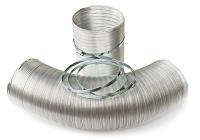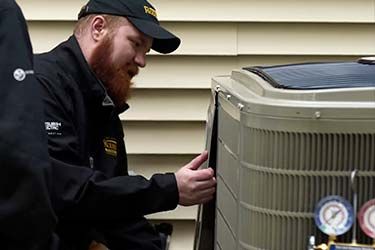



You're Sealing Your Ductwork? So What Products Are You Using?
Duct systems are notorious energy wasters. Sealing your ductwork often presents the best solution.

Over time, ducts often develop major leaks, which are hidden from view inside walls and beneath floors. Leakage can also lead to a compromise in home comfort, since leaky ductwork can’t properly supply all rooms with conditioned air.
To restore energy efficiency and comfort to your home here in the Route 495/128 area, it’s wise to seal those ducts. Success in the project depends upon expertise, technique and the type of materials used. So what’s best?
Mastic sealant
You really can’t beat duct mastic for sealing your ductwork, because of its ability to create a tight seal when properly applied -- but the product presents a challenge for newbies, as it's quite messy to work with. Further, mastic doesn’t harden, requiring that you join duct segments with sheet-metal screws before sealing and spreading mastic over joints.
Bigger leaks and spaces between duct sections or adjoining a plenum must be securely joined with mesh tape before applying mastic material. For fiberglass (board) ducts, pre-seal every joint with the fiberglass-mesh tape.
If your home has galvanized steel ducts, mastic can actually be a problem, especially for the non-expert. It’s difficult to use mastic on flexible ducts and around clamps.
Effective tape for ducts
If you're daunted by the prospect of using mastic properly, consider using approved metal-backed tape when sealing your ductwork. Avoid everyday cloth-backed duct tape found at home-improvement stores, which soon dries out as ductwork gets warm or just with the passage of time. Here are the general types available:
- Oriented-polypropylene tape (OPP) looks like packing tape. It’s got a smooth film backing with acrylic adhesive. Underwriters Laboratory-approved tape labeled for high-temperature use should work well to seal the metallic collar to flex ducts.
- Butyl duct tape is more expensive, with its foil backing, and has been known to perform better than OPP.
Tips and exceptions
- Even higher-performing tape must be used on a clean surface.
- Many experts advise against ever using tape in crawl spaces, so you may not be able to avoid mastic entirely on duct-sealing projects.
- Mastic should not be used to seal holes in air handlers/furnaces.
Questions about sealing your ductwork? Contact the experts at Rodenhiser Plumbing, Heating & Air Conditioning, serving the Route 495/128 area of Medway MA.
Image via Shutterstock.com
Nice people.
Great service.
Since 1928Terms & Conditions | Privacy Policy





Read From Over 14,000 Happy Customers
-
Both Alex and Patrick were knowledgeable, courteous, and professional. They made a change that might have solved the recent problem and have structured a more complete solution. We agreed to this...

-
Mike was thorough, thoughtful and considerate. Covered their shoes before entering, surveyed my issue and provided an explanation of the services and costs. Great Job!

-
Alex did a great job providing an explanation of the services provided and went out of his way to offer assistance/advice on other issues outside of our scheduled maintenance visit.

-
Brian did an excellent job inspecting our 18-year old boiler and replacing some of the accessory hardware that needed it, he also adjusted the outgoing hot water settings for our radiators and...

-
Rodenhiser is my one stop shop!!! They take care of my HVAC, electrical, and plumbing issues & are always helpful addressing any questions I may have about the systems in my house! Everyone...

-
Chris G. and Nick V. showed up bright and early at 8am to fix my water heater issue. They were on time, polite and were able to fix an issue that has been plaguing my house for a good year. They...

Call Rodenhiser at
508-321-3089
Call Rodenhiser at 508-321-3089
When you are looking for plumbing, electrical, heating or air conditioning in the Route 495 / 128 area, you will be delighted that you called Medway MA' trusted choice since 1928.
With a total dedication to professional workmanship and excellent service, discover why families and businesses continue to trust Rodenhiser after generations of service

Trusted Plumbers
Fast, On Time
HVAC Experts
Satisfaction Guaranteed
Expert Electricians
Maintenance Plans
CONTACT RODENHISER TODAY
325 Hopping Brook Rd Holliston MA 01746.
-
Master Plumber: #10961
-
Corporate Plumbing: #2288
-
Master Electrician: #23917A
-
Electrical Business: #4804
-
Master Sheet Metal (Unrestricted): #5867
-
Corporate Sheet Metal: #641
-
Home Improvement Contractor: #188806
*Heating system check terms and conditions: Residential Only. Must reside within our service area. Offer only available to 1 unit per household additional units are at full price. Can not be combined with other offers
*Late Season Special Extra Conditions: Gas Systems only. No Discounts on oil systems. Promotional price limited to one system per home, additional systems will be charged at full price. Residential Systems only. Must reside within our service area. *For EV Charger Offer also: valid only when the system is purchased through Rodenhiser.
















